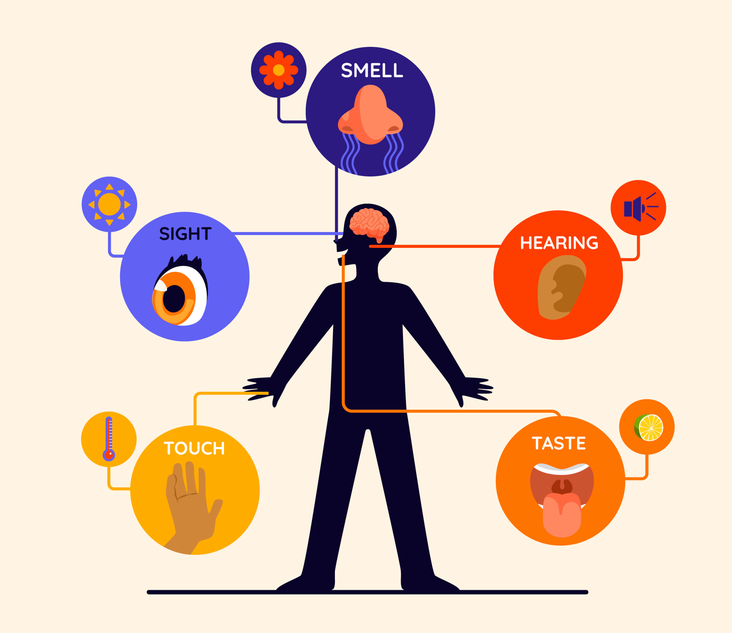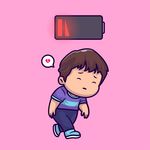How to Use the 5-4-3-2-1 Grounding Technique for Stress Relief
Jul 7, 2025 by Vreny Blanco · 5 min read · Mental Health

In this blog post, we’ll explore the 5-4-3-2-1 Grounding Technique for calming anxiety—a simple technique that uses your five senses to help you reconnect with the present moment. This practical, easy-to-apply tool helps you reduce both stress and anxiety. It’s also ideal for quickly regaining focus and boosting well-being.
The Power of Living in the Present
The fast pace of work and daily worries often trigger anxiety. The culture of “always being available,” information overload, and the constant drive to meet all expectations can become overwhelming. This reality directly affects our mental health, so it’s essential to have practical resources for feeling better.
When we experience anxiety, our minds tend to get stuck in the past (“What if I’d done things differently?”) or worry about the future (“What will happen if…?”), causing us to lose touch with the present. The 5-4-3-2-1 method helps bring you back to the here and now, easing the flood of anxious thoughts and helping you regain control of your emotions.
What is the 5-4-3-2-1 Coping Technique?
The 5-4-3-2-1 technique is a simple mindfulness exercise that uses your five senses to help you manage stress and anxiety by anchoring you in the present. It doesn’t require any special tools or experience—its effectiveness lies in its simplicity.
The exercise involves consciously identifying:
- 5 things you can see
- 4 things you can touch
- 3 things you can hear
- 2 things you can smell
- 1 thing you can taste
By focusing your attention on concrete stimuli, you interrupt the cycle of anxious thoughts. This technique is practical and can be used anywhere—at home, in the office, or even in traffic. It’s ideal for anyone looking for quick and effective solutions to stop overthinking and calm anxiety.
Why Is the 5-4-3-2-1 Technique So Effective?
The 5-4-3-2-1 technique is often used by people who experience panic attacks because it interrupts the spiral of anxiety before it takes over. However, you don’t need panic disorder to benefit from this exercise.
This technique helps cut through “mental noise” and shifts your attention back to what is actually happening right now. It isn’t just a temporary distraction—it helps train your brain to focus on the present moment and let go of negative or unnecessary thoughts.
When we get caught up in overthinking, we tend to go around in circles. Stress pulls us away from the present, causing us to obsess over past events or get lost in “what ifs” about the future. Our minds fill with memories, regrets, wishes, and fears.
Learning to bring your awareness back to the present helps slow down this mental overactivity. The best way to do that is by connecting with your five senses. Your brain can imagine anything, but your body and senses only exist in the present moment.
Your conscious mind can focus on only one thing at a time—either getting tangled up in thoughts or immersing yourself in the present through your senses. If you anchor your attention to the current moment using your senses, it becomes much harder for your mind to get lost in anxious or excessive thoughts.
How to Practice the 5-4-3-2-1 Technique
The next time you feel anxiety or stress, follow these steps:
5-👁️ See
- Look around you and name five different things you can see: for example, your computer screen, a coffee mug, a plant, a wall calendar or picture, your watch, or your phone.
- Notice their colors and shapes.
- Take your time visually scanning each item and soaking in its details.
4-🙌 Touch
- Next, identify four things in your environment you can feel or touch.
- Pay attention to sensory input from your hands or body: the texture of your clothes, the warmth of your chair, your mouse or keyboard, a pen, the temperature of a glass of water, and so on.
3-👂 Hear
- Identify three things you can hear.
- Pause for a moment and focus on the sounds: you might hear cars passing by, the air conditioner, distant conversations, a coworker’s mouse clicking, or birds singing.
2-👃 Smell
- Find two things you can smell.
- Take a deep breath and identify two scents—maybe your perfume, freshly brewed coffee, your lunch, or even just the air in your office.
1-👅 Taste
- Finally, focus on the current taste in your mouth: it could be gum, coffee, water, or simply your own saliva.
- If you don’t perceive any taste, try sipping water or eating a small snack.
That’s it! Just use your senses and give yourself a break.
Try It Now!
Pause for a moment, take a deep breath, and use your senses to reconnect with the present. The 5-4-3-2-1 coping technique can become a daily ally, both in your personal life and at work.
The first time you practice it, you might not remember the exact order of the steps, but that’s not a problem. What matters is focusing your full attention on something external and allowing your anxious energy to fade away.
If you make this technique a regular part of your routine, you’ll notice how it helps you calm down and relax almost immediately.
Want to Learn More?
What are the 4 A’s of stress management and how to use them: Learn about the 4 A’s of stress management—avoid, alter, accept, and adapt—and how to use them to regain control of your attention, your time, and your well-being.



